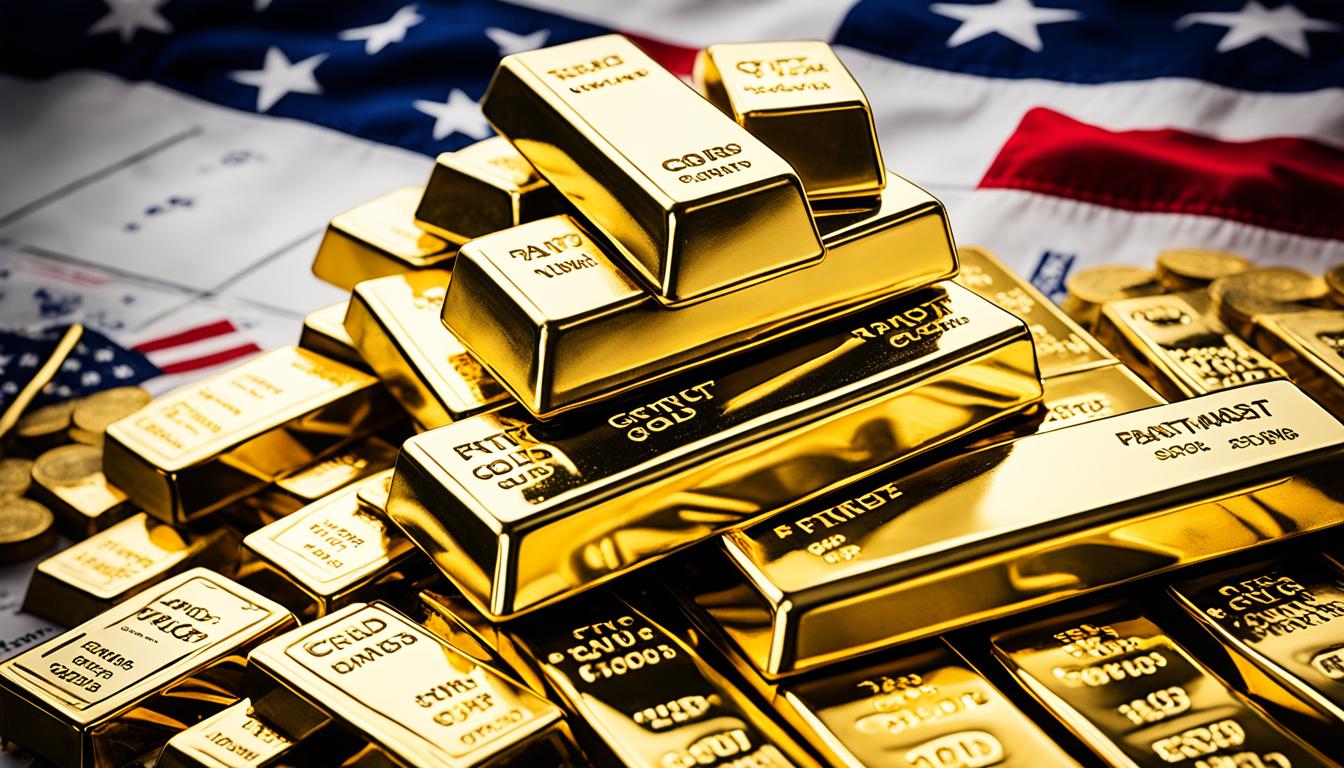Economic factors play a significant role in the performance of a Gold IRA. Inflation can decrease the value of currency, making gold more appealing as a hedge. Interest rates have an inverse effect on gold prices; low rates make gold more attractive. Market volatility tends to benefit gold, especially during uncertain times. Economic indicators like GDP growth and inflation can impact the value of a Gold IRA. Gold serves as a safeguard against economic fluctuations. To prepare, it is important to diversify into precious metals and closely monitor these indicators. Understanding these factors is crucial for maximizing returns on a Gold IRA. Delve deeper into economic complexities for better decision-making.
Key Takeaways
- Inflation erodes fiat value, boosting gold's appeal.
- Interest rates inversely impact gold prices in IRAs.
- Market volatility increases gold's value as a hedge.
- Economic indicators drive investor sentiment towards gold.
- Gold IRAs offer stability during economic fluctuations.
Impact of Inflation on Gold IRA
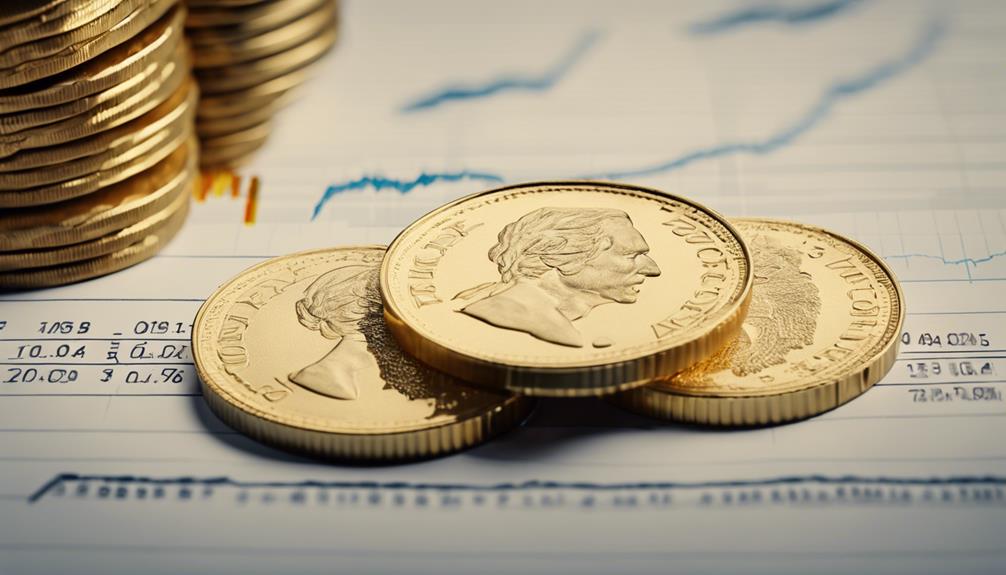
Invariably, inflation exerts a significant influence on the performance of Gold IRAs due to its impact on the purchasing power of fiat currencies. As inflation erodes the value of traditional currencies, investors turn to assets like gold to hedge against this loss of purchasing power. Gold IRAs, which include physical gold or gold-related assets, are particularly favored for wealth preservation during times of inflation. Historical trends indicate that gold prices often rise when inflation rates are high, making gold a valuable component in a diversified retirement portfolio.
The intrinsic value and limited supply of gold make it a reliable store of wealth, especially when compared to fiat currencies that can be devalued by inflationary pressures. Gold's price appreciation typically outpaces inflation rates, offering investors the potential for wealth preservation over the long term. By including gold in their IRAs, investors can help safeguard their retirement savings from the negative effects of inflation, ensuring a more secure financial future.
Influence of Interest Rates
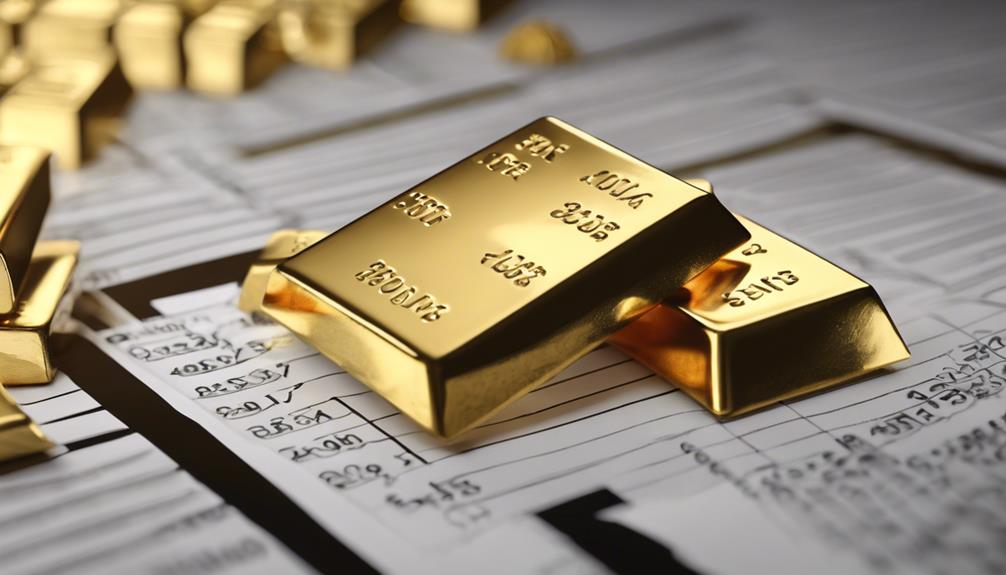
The impact of interest rates on the performance of Gold IRAs is a critical factor that investors must carefully consider due to the inverse relationship between interest rates and gold prices. Interest rates play a significant role in influencing gold prices, with higher rates typically leading to lower gold values. This is because gold, being a non-yielding asset, competes with interest-bearing investments like bonds.
When interest rates are low, the appeal of gold increases as it becomes relatively more attractive compared to other investments. Federal Reserve decisions regarding interest rates can have a direct impact on the performance of Gold IRAs, making it essential for investors to closely monitor and understand these decisions.
Market Performance and Gold IRA
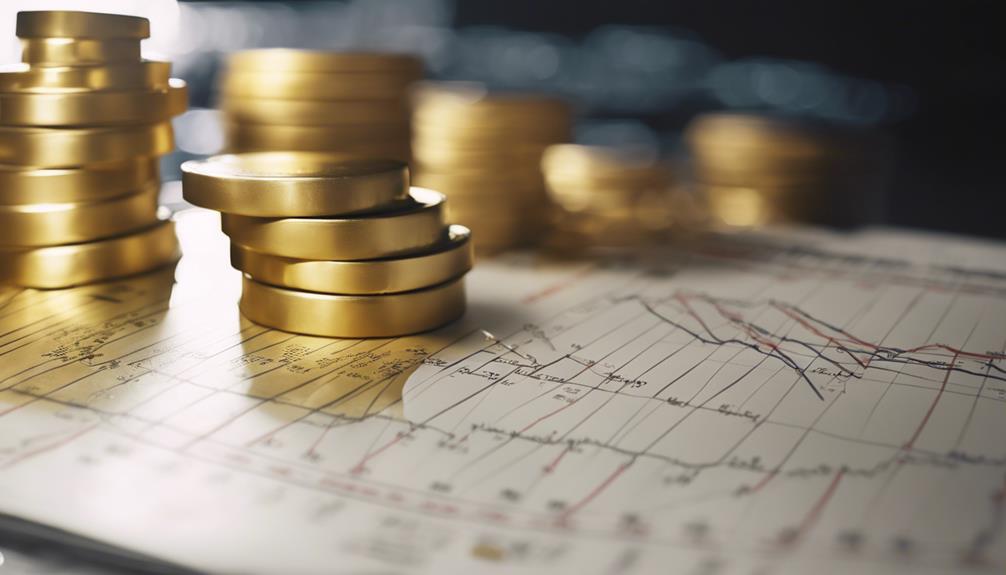
Market performance plays an essential role in determining the value of gold within a Gold IRA. Gold tends to perform well during times of economic uncertainty and market volatility, making it a sought-after asset for diversification in investment portfolios.
Factors like inflation, interest rates, and geopolitical events can greatly impact the price of gold within a Gold IRA, emphasizing the importance of closely monitoring market performance for informed decision-making.
Market Volatility Impact
During times of market volatility, the performance of a Gold IRA can be greatly influenced by fluctuations in gold prices. Gold prices tend to rise when there is market uncertainty, as investors often view gold as a safe haven asset. This means that during turbulent market conditions, investors may flock to gold, potentially driving up its price and benefiting Gold IRA holders.
The stability of gold during economic downturns can provide a protective shield against market volatility for those with investments in Gold IRAs. Understanding how market volatility impacts gold prices is vital for investors looking to make informed decisions when managing their Gold IRA portfolios. By recognizing the role of gold as a safe haven asset, investors can navigate market volatility more effectively within their Gold IRA investments.
Diversification Benefits
By incorporating gold into a Gold IRA, investors can effectively diversify their portfolios to mitigate risks associated with market volatility. Diversifying one's portfolio with gold can provide a counterbalance to traditional investments like stocks and bonds, as gold often moves inversely to the stock market, offering a potential hedge against market downturns.
This diversification strategy can help protect wealth during times of economic uncertainty and fluctuations. Gold's historical reputation as a safe haven asset further adds stability to a retirement portfolio.
Including gold in an IRA not only offers protection against market volatility but also serves as a hedge against inflation, preserving purchasing power over the long term. Gold's unique characteristics make it a valuable asset for investors looking to bolster their portfolios with diversification benefits.
Inflation Hedge Potential
Historically, gold has demonstrated its effectiveness as a reliable hedge against inflation, safeguarding investors' purchasing power over time. As inflation erodes the value of fiat currencies, the intrinsic value of gold tends to rise, making it a sought-after asset during inflationary periods.
This inflation hedge potential is a key reason why investors consider including gold in their retirement portfolios, such as a Gold IRA. By preserving purchasing power, gold investments can offset the eroding effects of inflation on traditional assets like stocks and bonds.
During times of high inflation rates, holding a Gold IRA can help maintain the value of retirement savings, offering a way to protect wealth in the face of economic uncertainties.
Economic Outlook and Gold IRA
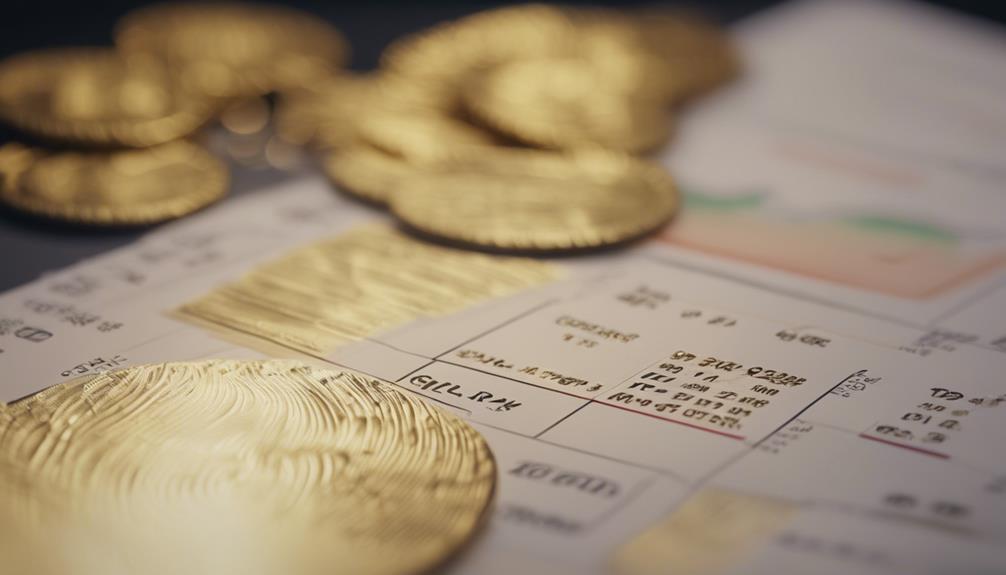
The symbiotic relationship between economic indicators and the performance of Gold IRAs underscores the critical importance of monitoring the economic outlook. The economic outlook plays a pivotal role in shaping the performance of a gold IRA. Factors such as inflation, interest rates, and market stability are closely tied to how well a gold IRA performs.
Changes in GDP growth projections can have a substantial impact on gold prices, subsequently influencing the overall performance of a gold IRA. Economic uncertainty tends to drive investors towards safe-haven assets like gold, thereby increasing the demand for Gold IRAs.
Moreover, market confidence, which is influenced by economic growth, can sway investor sentiment towards gold investments within Gold IRAs. Understanding economic indicators such as GDP, inflation rates, and interest rates is vital for effectively managing and optimizing the performance of a Gold IRA.
Inflation Vs. Deflation

In considering the impact of inflation versus deflation on a Gold IRA, two vital factors come into play: price stability and market demand fluctuations.
Inflation tends to drive prices up, potentially increasing the value of gold as a hedge against diminishing currency purchasing power. Conversely, deflation, marked by a decrease in general price levels, may elevate gold's status as a safe haven asset due to its perceived stability in turbulent economic times.
Price Stability Impact
During periods of economic volatility, the impact of price stability, influenced by both inflation and deflation, is essential in shaping the performance of a Gold IRA. Inflation, an economic phenomenon characterized by a general increase in prices, erodes the purchasing power of fiat currencies. Gold acts as a valuable hedge during inflationary periods, safeguarding against the devaluation of paper currency.
Conversely, deflation, marked by a decrease in prices, can increase the real value of gold, making it a stabilizing asset during economic contractions. Gold's intrinsic value and limited supply position it as a reliable asset to counter both inflationary and deflationary pressures, ensuring price stability in a diversified portfolio.
Understanding the impact of price stability, whether through inflation or deflation, is vital for leveraging gold's role in preserving wealth and mitigating economic uncertainties within a Gold IRA.
Market Demand Fluctuations
Market demand dynamics for gold undergo significant shifts in response to inflationary and deflationary pressures, influencing its role within a Gold IRA.
In times of inflation, investors often turn to gold as a safe haven asset to preserve purchasing power amidst currency devaluation. The increased demand for gold during inflationary periods is driven by its historical performance as a hedge against rising prices.
Conversely, during deflation, the demand for gold may decrease as investors prioritize assets with higher liquidity, such as cash. Understanding these fluctuations in market demand due to inflation or deflation is vital for effectively managing the performance of a Gold IRA.
It is essential for investors to monitor economic conditions closely to make informed decisions regarding their gold investments.
Stock Market Volatility Analysis
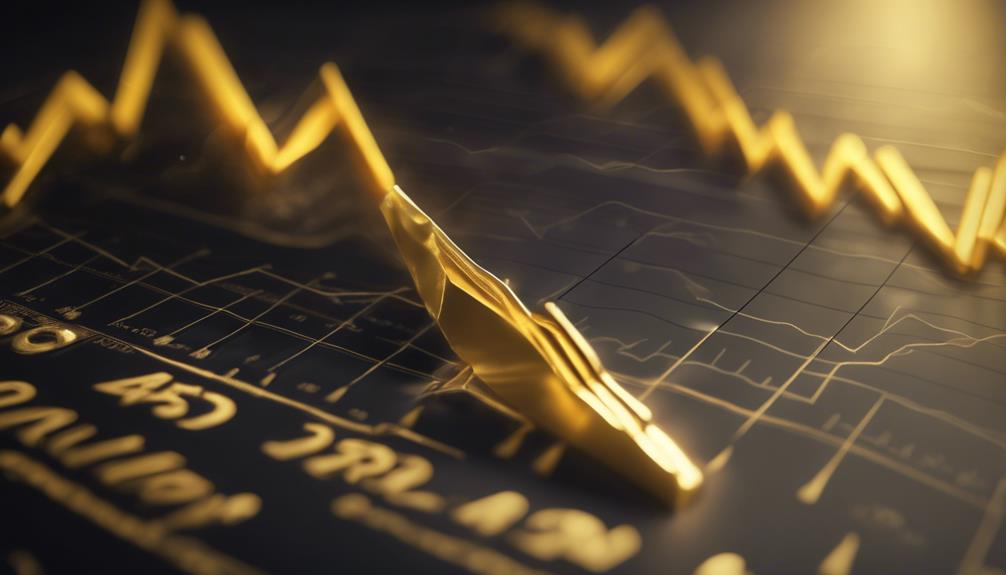
Analysis of stock market volatility plays an essential role in evaluating the performance of a Gold IRA. During times of stock market turbulence, investors often turn to safe-haven assets like gold to protect their portfolios. The demand for gold typically rises when stock market volatility increases, as gold prices tend to climb in such conditions. This movement makes gold a favored choice for portfolio diversification, helping to balance risk during uncertain market periods.
Gold's inverse relationship with stocks further enhances its appeal, offering a counterbalance to the fluctuations experienced in traditional investments. Understanding stock market volatility is vital for effectively managing and optimizing the performance of a Gold IRA, especially when economic conditions are unpredictable. By monitoring stock market volatility and its impact on gold prices, investors can make informed decisions to safeguard and potentially enhance the value of their Gold IRA holdings during times of economic instability.
Benefits During Economic Fluctuations
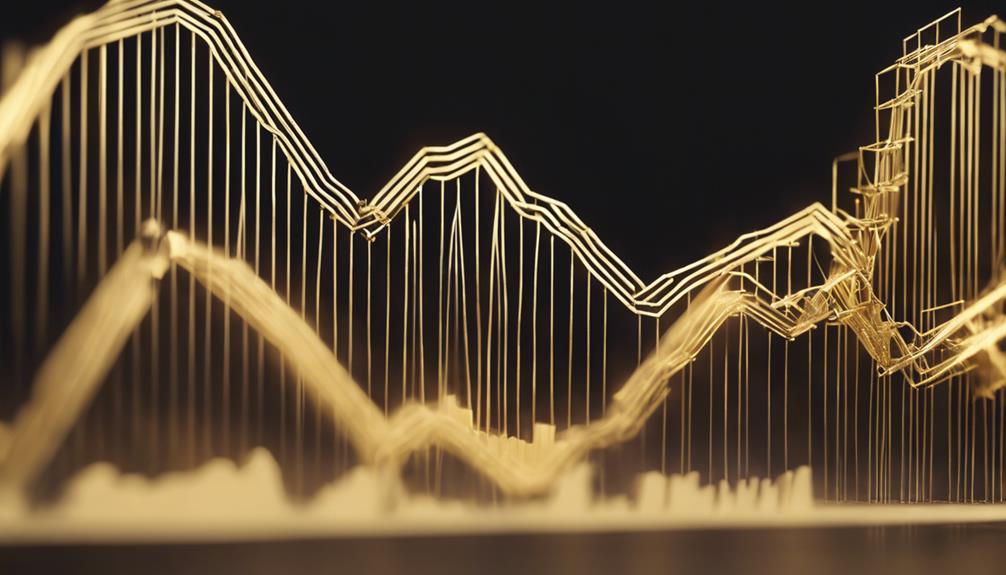
Given the inherent stability and wealth preservation benefits offered by Gold IRAs, particularly in times of economic fluctuations, investors can strategically leverage these assets to safeguard their portfolios and capitalize on market uncertainties. Gold IRAs act as a strategic hedge against inflation and economic uncertainty, providing stability and wealth preservation during market turbulence.
They offer protection against depreciating fiat currencies in inflationary periods, enhancing long-term growth potential and diversification in investment decisions. Including gold in IRAs can mitigate risks associated with economic fluctuations and market volatility, making it a reliable asset during uncertain times.
Risks of Fluctuating Economy

Managing a fluctuating economy poses risks that can impact the performance of a Gold IRA, particularly in relation to the value of gold amid changing market conditions. Economic fluctuations, such as shifts in GDP growth rates, play an important role in influencing gold prices, subsequently affecting the overall performance of a gold IRA.
During economic uncertainties, inflationary pressures may rise, leading to increased demand for gold as a hedge, which can impact gold IRA returns. Additionally, changes in interest rates can alter the opportunity cost of holding gold within a gold IRA, thereby influencing its overall performance.
Geopolitical events and market sentiment that often accompany economic fluctuations can create a sense of uncertainty, further impacting the value of gold in a gold IRA. Investors need to closely monitor economic indicators and market trends to navigate the risks associated with economic fluctuations and make informed decisions regarding their gold IRA performance.
Preparation for Economic Fluctuations
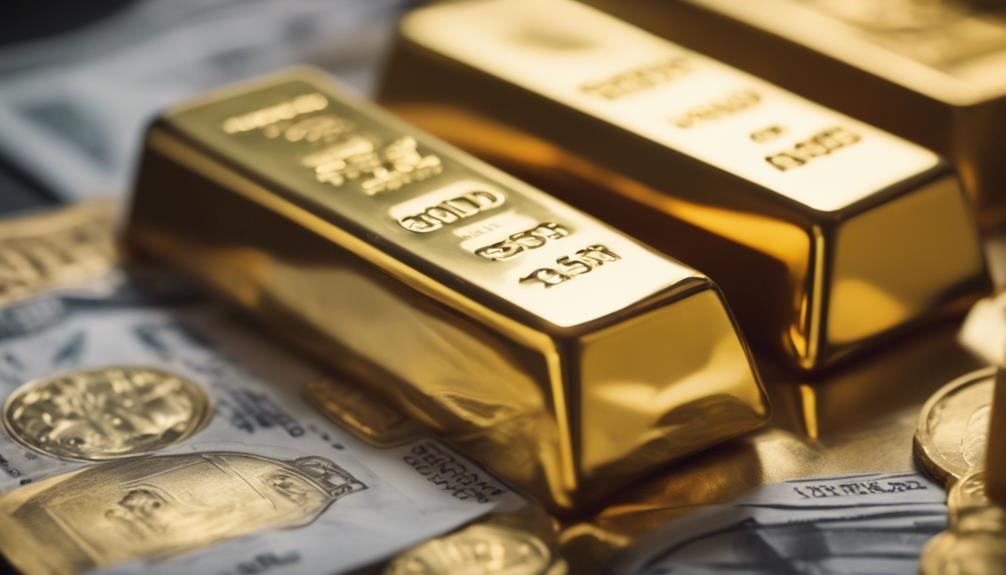
Effective preparation for economic fluctuations in a Gold IRA involves strategic diversification with various precious metals to minimize risk exposure. By spreading investments across different precious metals like gold, silver, and platinum, investors can safeguard their Gold IRA against the volatility of any single metal. This diversification strategy helps balance the portfolio and reduce the impact of price fluctuations in any one metal.
| Precious Metal | % Allocation | Purpose |
|---|---|---|
| Gold | 40% | Store of value |
| Silver | 30% | Industrial uses and value |
| Platinum | 30% | Diversification and demand |
Monitoring economic indicators like inflation rates and interest rates is essential for anticipating market movements and adjusting Gold IRA investments accordingly. Understanding how these indicators influence the prices of precious metals can guide investors in making informed decisions during economic fluctuations. Additionally, staying informed about global economic trends and seeking advice from financial experts can further enhance the preparation of a Gold IRA for varying economic conditions.
Managing Risks, Maximizing Benefits

Gold IRA investors must carefully consider risk mitigation strategies to protect their investments while also implementing benefit optimization techniques to enhance their overall returns.
By diversifying their portfolios and closely monitoring economic indicators, investors can effectively manage risks and capitalize on potential opportunities.
Seeking advice from financial experts can further aid investors in managing the complexities of the market and making informed decisions to maximize the benefits of their Gold IRA investments.
Risk Mitigation Strategies
Diversification with gold in a Gold IRA aids in spreading investment exposure across various asset classes, contributing to effective risk management and wealth preservation. By diversifying your investment portfolio within a Gold IRA, you can mitigate risks associated with market volatility and economic uncertainties. Seeking advice from a financial advisor can offer valuable insights into creating a well-balanced and diversified Gold IRA portfolio. Monitoring economic trends and indicators allows for timely adjustments to the portfolio, enhancing risk management strategies. Maintaining a long-term perspective in Gold IRA investing helps in enduring short-term fluctuations and maximizing benefits over time. A diversified portfolio not only helps in managing risks but also plays an important role in wealth preservation and growth.
| Risk Mitigation Strategies | |
|---|---|
| Diversification | Spreading investment exposure across various asset classes |
| Monitoring | Keeping track of economic trends and indicators for timely adjustments |
| Professional Guidance | Seeking advice from financial professionals for risk management insights |
Benefit Optimization Techniques
Implementing strategic portfolio adjustments based on market conditions and risk tolerance is essential for optimizing benefits in a Gold IRA. Diversification plays a vital role in managing risks and maximizing benefits.
Monitoring economic indicators such as inflation, interest rates, and stock market performance is key to benefit optimization. Rebalancing the portfolio according to risk tolerance and objectives can help in maximizing returns.
Timing the market and making well-informed decisions are techniques that can enhance the performance of a Gold IRA. Staying informed about economic trends and adjusting the portfolio accordingly is a proactive approach that can lead to benefit optimization in a Gold IRA.
Frequently Asked Questions
What Are the Risks of a Gold Ira?
Investing in a Gold IRA carries risks such as price volatility, economic impacts, geopolitical events, and market sentiment.
While offering a hedge against inflation and diversification benefits, Gold IRAs lack income generation potential compared to traditional assets.
Understanding these risks is vital for investors considering Gold IRAs, as they must be prepared for fluctuations in value and potential impacts from external factors on their investment performance.
What Are the Negatives of a Precious Metal's Ira?
Precious metal IRAs come with drawbacks such as limited liquidity, potential lower returns, and restricted access to funds compared to traditional investments. Secure storage requirements and associated costs for metals impact overall returns.
These IRAs demand careful consideration due to their unique limitations and differences from more mainstream investment options. Understanding these negatives is essential for informed decision-making in building a diversified retirement portfolio.
What Are the Disadvantages of Investing in Gold?
Investing in gold has drawbacks including limited income generation, vulnerability to economic conditions, geopolitical events, and market sentiment. Unlike stocks and bonds, gold investments do not offer regular income. Economic shifts can impact gold prices, while geopolitical tensions can influence its value. Market sentiment also plays a role in determining gold's performance.
Additionally, gold investments may have lower liquidity compared to other assets, making them less easily tradable.
Why Is Gold Going Down?
Gold prices are impacted by various factors such as interest rates, market sentiment, economic conditions, inflation expectations, and geopolitical events.
Currently, gold prices may be declining due to improving economic stability, reduced demand for safe-haven assets, and easing trade tensions. These factors can lead investors to seek higher-yielding investments, diminishing the appeal of gold.
Additionally, shifts in monetary policies and economic indicators can contribute to the downward trend in gold prices.
How Do Economic Factors Impact the Full Cost of Investing in Gold IRAs?
When considering the full cost of Gold IRAs, economic factors play a crucial role. Inflation, interest rates, and market instability can all impact the value of gold and therefore the overall cost of investing in Gold IRAs. It’s important to closely monitor these economic factors when planning for retirement.
Conclusion
To sum up, the performance of your Gold IRA can be greatly impacted by various economic factors such as inflation, interest rates, market performance, and economic outlook.
While there are benefits to be had during economic fluctuations, there are also risks that must be carefully managed.
By preparing for economic fluctuations and actively managing risks, you can maximize the benefits of your Gold IRA in an ever-changing economic landscape.





